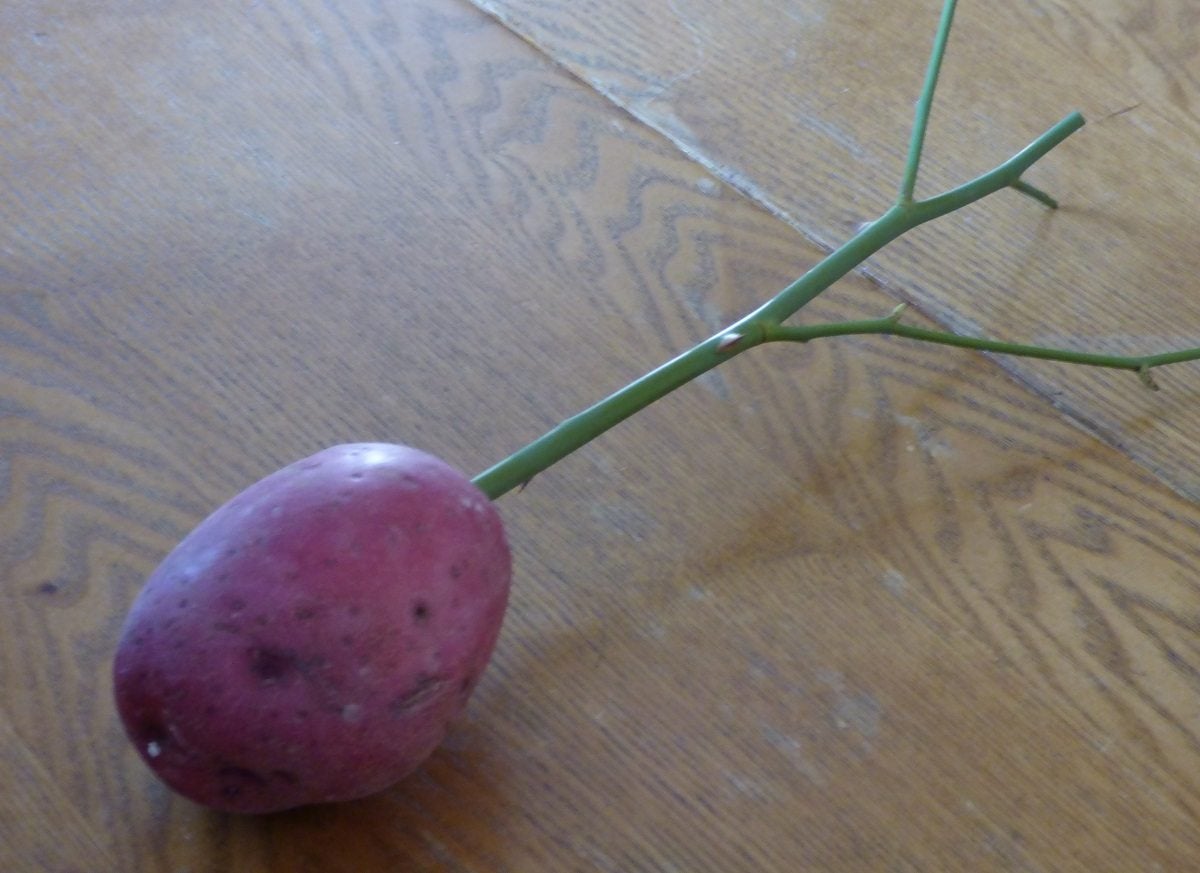Rooting Rose Cuttings: Can You Grow Rose Cuttings In A Potato


Propagating or rooting rose cuttings to make more of the rose bushes we love, using potatoes, took to the internet a while back. I personally have never tried using potatoes but may well do so at some point. So, can you grow rose cuttings in a potato? There is some merit to the thought process of keeping the cutting moist as we attempt to get the rose bush cane cutting to take root. I have read about many different forms of propagation over my years growing roses on the farm and now in the city. I must admit that using rose bush cuttings in potatoes is intriguing.
Propagating with Rose Cuttings
To me there are some steps that one must take to have the best chance of being successful at getting a rose cutting to take root, especially in a potato. We want to take our cutting from a mature rose cane, one that has flowered/produced a bloom or blooms. I like to take cuttings that are 6 to 8 inches (15-20 cm.) long. Place the cuttings immediately in a jar or can of water to keep them moist. Label each cutting with the name of the rose bush it was taken from if you are taking several cuttings at one time.
How to Plant Rose Cuttings in Potatoes
Prepare what will be the rooting end of the cane by trimming off about ½ inch (1 cm.) when you are ready to get going with the process. I like to lightly score the sides of the cane with a sharp knife near the bottom where the new roots will form. Removing or wounding a bit of the outer cane protection is fine, as it provides more root starting area. Dip the cut end of the cane into your favorite rooting hormone compound. I personally like one called Olivia's Cloning Gel, as I have had great results with it. (Remove the foliage from the cutting, leaving only some on top.) Place the cutting immediately into the rooting medium of choice-- in this case, a potato. Choose potatoes with higher moisture content like white potatoes or red potatoes. Prepare the potato by making a round penetration into the center using a screwdriver, or perhaps a drill bit, that is a little smaller than the diameter of the rose cutting. Place the prepared cutting into the potato, but do not push it clear through. Plant the potato and cutting out in a garden area with at least 3 inches (8 cm.) of good soil covering it, tamp lightly, and water it in. Place a jar or a wall-o-water around the planted cutting. I like using the wall-o-water units for this, as I can push them closed at the top forming a teepee-looking mini greenhouse over my cuttings or plant starts. Keep an eye on the soil moisture and see what happens. I have read that some folks have had success with the potato method, while some others have had either no success with it or only marginal success. Placing the prepared cutting in a potato without planting the entire thing does not seem to work well at all according to some reports. Therefore, planting the entire potato and cutting seems to be the best way to go. If you do not have a garden area in which to do the planting, a large pot (something the size of a 5-gallon (19 L.) bucket or larger) with drainage holes in it would likely work okay too-- or you can opt for something smaller if this is only temporary, like waiting for the weather to warm up. Using the planting in a pot method, you could cover the pot with a large clear plastic bag to help hold in the valuable moisture, a wall-o-water unit may still work, too, if the pot is large enough for it.
Additional Info About Rooting Rose Cuttings
A couple of things to keep in mind when it comes to propagation of roses:
- Many rose bushes are patented and are not to be propagated until a certain amount of time has passed. This is how the big rose growers make their income, and cutting into their income harms all rose lovers, as it impedes the ability of the growers to bring us all the pretty new varieties of roses each year.
- Many rose bushes will not perform well on their own root systems, so they are grafted onto hardier rootstock. The grafting allows the rose bush to thrive in various climatic conditions. Thus, the rose we propagate may not be hardy enough to survive the climatic conditions in our gardens.
In some cases, the rose bushes will be fine and others not so much. I wanted you to know this so that if the rose bush does not survive its first winter season, it is not necessarily due to anything you did wrong in the process.
Sign up for the Gardening Know How newsletter today and receive a free copy of our e-book "How to Grow Delicious Tomatoes".

Stan V. Griep contributed to Gardening Know How for many years and has been a Colorado Native Rosarian for over four decades. He is an American Rose Society Certified Consulting Master Rosarian in the Rocky Mountain District, and a member of the Denver Rose Society, the Loveland Rose Society, and the American Rose Society. He is Gardening Know How's in-house expert on all things roses.